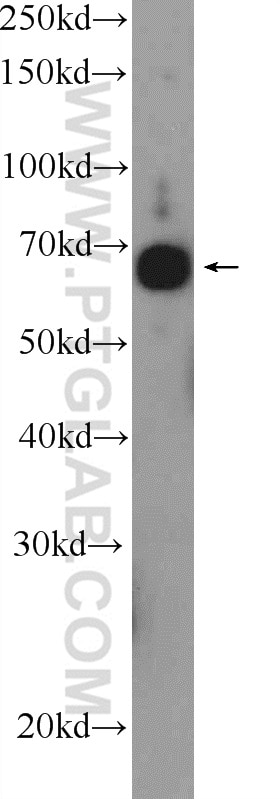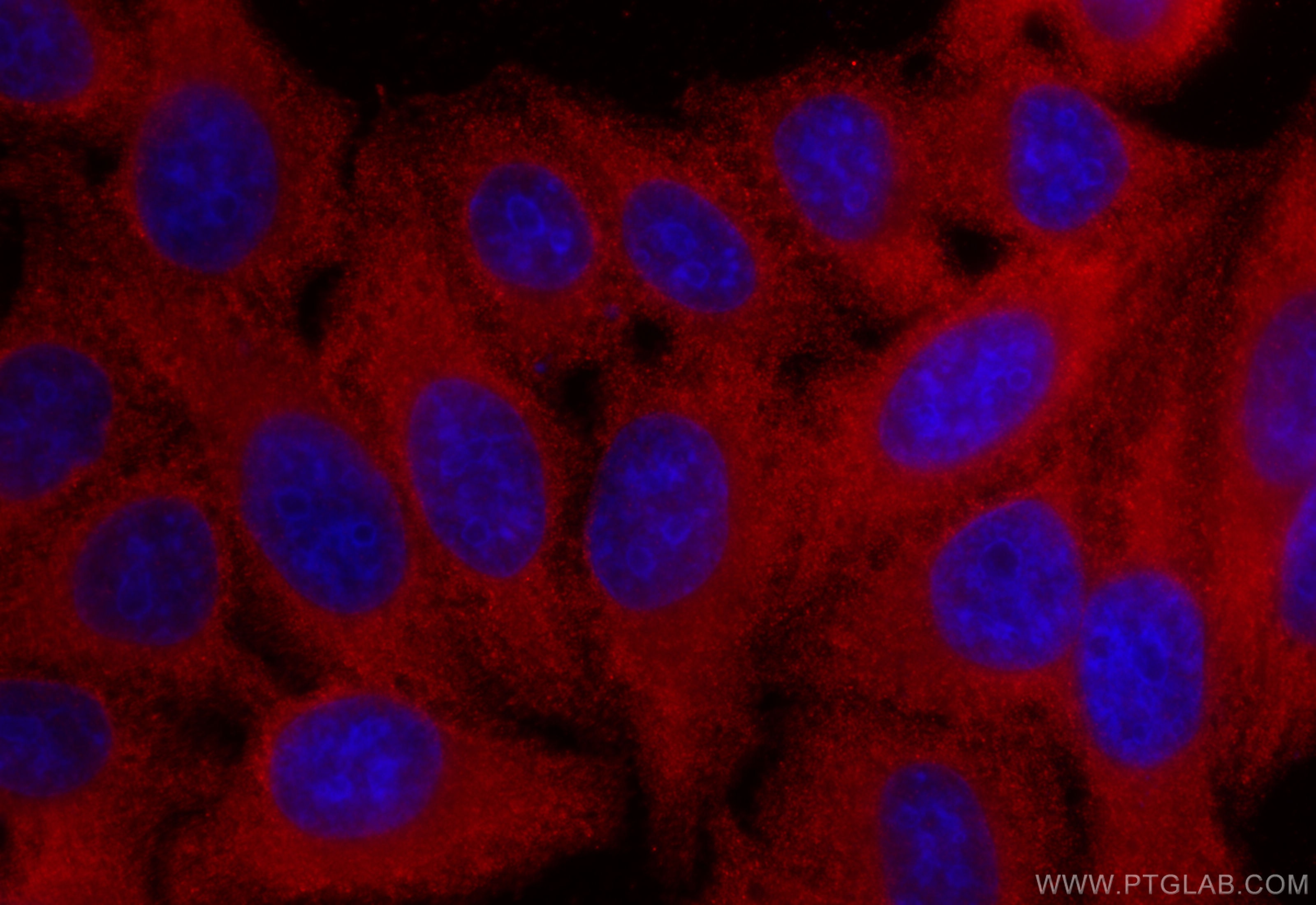RAPH1 Polyklonaler Antikörper
RAPH1 Polyklonal Antikörper für WB, IF/ICC, ELISA
Wirt / Isotyp
Kaninchen / IgG
Getestete Reaktivität
human
Anwendung
WB, IF/ICC, ELISA
Konjugation
Unkonjugiert
Kat-Nr. : 25750-1-AP
Synonyme
Geprüfte Anwendungen
| Erfolgreiche Detektion in WB | SKOV-3-Zellen |
| Erfolgreiche Detektion in IF/ICC | HepG2-Zellen |
Empfohlene Verdünnung
| Anwendung | Verdünnung |
|---|---|
| Western Blot (WB) | WB : 1:500-1:1000 |
| Immunfluoreszenz (IF)/ICC | IF/ICC : 1:50-1:500 |
| It is recommended that this reagent should be titrated in each testing system to obtain optimal results. | |
| Sample-dependent, check data in validation data gallery | |
Produktinformation
25750-1-AP bindet in WB, IF/ICC, ELISA RAPH1 und zeigt Reaktivität mit human
| Getestete Reaktivität | human |
| Wirt / Isotyp | Kaninchen / IgG |
| Klonalität | Polyklonal |
| Typ | Antikörper |
| Immunogen | RAPH1 fusion protein Ag22705 |
| Vollständiger Name | Ras association (RalGDS/AF-6) and pleckstrin homology domains 1 |
| Berechnetes Molekulargewicht | 1250 aa, 135 kDa |
| Beobachtetes Molekulargewicht | 67 kDa |
| GenBank-Zugangsnummer | BC156922 |
| Gene symbol | RAPH1 |
| Gene ID (NCBI) | 65059 |
| Konjugation | Unkonjugiert |
| Form | Liquid |
| Reinigungsmethode | Antigen-Affinitätsreinigung |
| Lagerungspuffer | PBS with 0.02% sodium azide and 50% glycerol |
| Lagerungsbedingungen | Bei -20°C lagern. Nach dem Versand ein Jahr lang stabil Aliquotieren ist bei -20oC Lagerung nicht notwendig. 20ul Größen enthalten 0,1% BSA. |
Hintergrundinformationen
RAPH1 encodes the lamellipodin protein (Lpd), which binds to Ena and VASPs to assist in actin cytoskeleton assembly; in this way, the gene plays an important role in cellular motility and lamelipodial protrusion. This protein has 9 isoforms producing different molecular weights of 135 kDa, 67 kDa, 70 kDa, 73 kDa.
Protokolle
| PRODUKTSPEZIFISCHE PROTOKOLLE | |
|---|---|
| WB protocol for RAPH1 antibody 25750-1-AP | Protokoll herunterladen |
| IF protocol for RAPH1 antibody 25750-1-AP | Protokoll herunterladen |
| STANDARD-PROTOKOLLE | |
|---|---|
| Klicken Sie hier, um unsere Standardprotokolle anzuzeigen |



